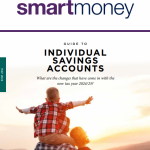
Guide: Individual Savings Accounts (ISAs)
9.07.2024Welcome to our Guide to Individual Savings Accounts. This guide explains the changes to Individual Savings Accounts (ISAs) for the 2024/25 tax year. ISAs offer a versatile and tax-efficient way to save for the future, whether for yourself, your children, or your grandchildren. Now that we have entered the new financial year, significant changes have been introduced to ISAs.
Since 6 April, savers and investors have had a more flexible approach to using their ISA allowance. For the first time, individuals can open multiple accounts of the same type of ISA within a single tax year, from 6 April one year to 5 April the next, provided they do not exceed the annual ISA limit. This marks a departure from previous rules, which annually restricted savers to one account per ISA type.
Download our guide to find out more
Individual Savings Accounts (ISAs)
Download the guide.
Topics covered in this guide:
Get in touch
If you want guidance ISAs or on making investing decisions, regardless of where you stand on your financial journey, we can help devise an investment strategy to achieve your goals.
Please contact us: email advise-me@fosterdenovo.com, call 0330 332 7866 or book a meeting.
This guide does not constitute tax or legal advice and should not be relied upon as such. Tax treatment depends on the individual circumstances of each client and may be subject to change in the future. For guidance, seek professional advice.
A pension is a long-term investment not normally accessible until age 55 (57 from April 2028 unless the plan has a protected pension age).
The value of your investments (and any income from them) can go down as well as up, which would have an impact on the level of pension benefits available.
Your pension income could also be affected by the interest rates at the time you take your benefits.

 Search
Search








